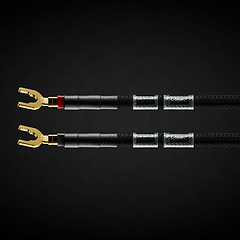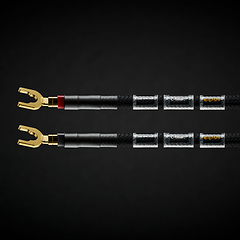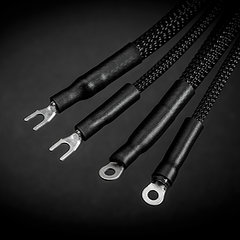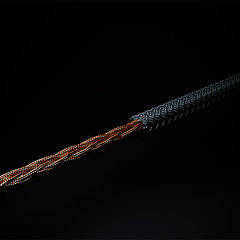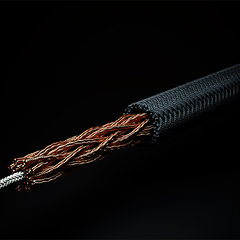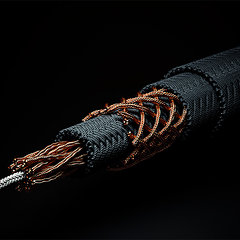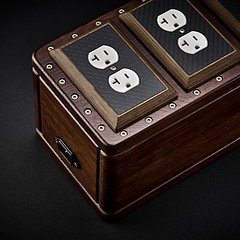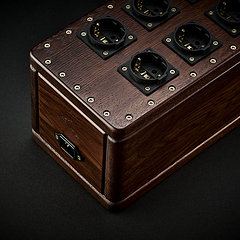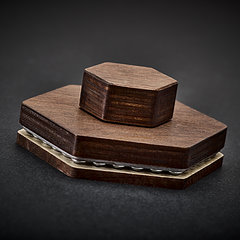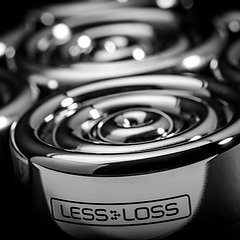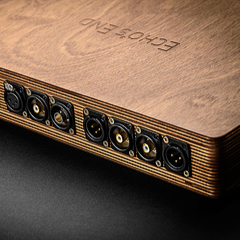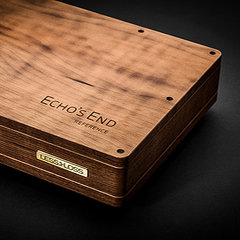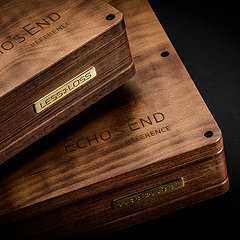 LessLoss introduces C-MARC™, the new standard for audio wire and cable!Wednesday 21 December, 2016
Dear esteemed customers,
After six intense years of R&D, it is now my pleasure to introduce to you our very best technological development. We name our new wire and cable technology C-MARC™, which stands for Common-mode Auto-rejecting Cable.  C-MARC™ is unlike any other hookup wire or cable currently being produced. It is based on the bucking coil method of noise reduction, used most famously in twin coil pickup designs first developed in the mid-1930's to silence hum from electric guitars.  This type of guitar pickup was called the Humbucker because it 'bucks the hum,' i.e. noise, out of the desired guitar signal through phase cancellation of two counter-polarized inductors. When the inductors both receive a common signal, it is induced in opposite polarities by each coil. These opposite polarities then mutually cancel when the two counter-polarized currents are combined through simple electrical summation. Humbucking coils are also used in some microphone designs as well as in sensitive sensor technology where induced stray noise is not acceptable and the highest signal to noise ratio is desired. LessLoss designs a new type of wire around the Humbucking principle C-MARC™ wire is a special type of Litz wire. It features all of the known benefits of traditional Litz wire without Litz wire's disadvantage of being formed as an elongated coil (inductor). Traditional Litz wire has these advantages over normal 'naked' multi-stranded wire and solid core wire: (1) Litz wire has a greater ratio of surface area to cross sectional area, resulting in less phase smearing between lower and higher frequencies. (2) Litz wire creates no distortions due to so-called “strand jumping” or diode effects resulting from loosely contacting oxide layers of adjacent naked strands. (3) Litz wire is more flexible, practical and safer than solid core wire of the same large cross sectional area. C-MARC™ wire shares all of the above advantages of traditional Litz wire, and advances the art with these additional unique benefits: (1) Traditional Litz wire is bunched and then twisted in only one direction, leading to the formation an elongated group of uni-directional coils (inductors) of differing diameters, in structure resembling elongated overstretched springs of different sizes.  [fig. 1.: Sketch of typical Litz structure where multiple coil diameters and single coil turn direction resemble several overstretched springs bunched together. This structure allows high speed of production.]  [fig. 2.: Each long separately insulated Litz wire can be seen as a separate coil of a given diameter and step. The different diameters are a result of the bunching before mutual twisting.]  [fig. 3.: Individual wires of differing thicknesses are bunched together to form different geometries. Many variations of Litz structure exist, most founded upon the main idea of first bunching and then twisting into spirals.] Type 7 Litz  [fig. 4.: Some manufacturers offer braided Litz wire. This wire also is formed from initially bunched and mutually twisted strands before braiding. This type of wire is often referred to as Type 7 Litz wire and is compressed after braiding the twisted bunches into an overall rectangular shape before tape wrapping and over-extrusion.] How C-MARC™ is profoundly different In contrast, C-MARC™ wire goes down to the very fundamentals in a completely mirrored, balanced geometry. It aligns every Litz strand's clock-wise turn with a corresponding Litz strand's counter-clockwise turn of exactly mirrored diameter and step along the length of the wire. These two resulting spirals are mutually superposed in counter-braided fashion. Noise is thus induced in exactly opposite polarities and in exactly mirrored amplitudes, while the good signal is common to both spirals. The two counter-polarized noise signals mutually cancel when the two counter-polarized currents are combined through simple electrical contact at both ends of the wire. Thus, through auto-rejection of opposing electrical phase through summation at the ends, C-MARC™ wire perfectly counters the noise induction, whether from external sources or self-induced, which normally pollutes every other twisted Litz wire assembly. In this way, C-MARC™ wire achieves signal transfer which is corrupted substantially less than the industry has been able to achieve through other means.  [fig. 5.: C-MARC™ Litz schematic layout. The clockwise and counter-clockwise spirals are mirrored in diameter, step and wire gauge, while at the same time being superposed in relation to one another. This results in opposite phase induction within the very structure of a single polarity line. While production speed is substantially slower, the silence of operation of C-MARC wire is far superior to standard Litz structures.] (2) This is not all. LessLoss C-MARC™ wire features two-scale "fractal" replication of the aforementioned mutually superposed counter-twisted layout. This mirrored and nested structure further enhances the mutual cancellation of counter-polarized inductive twists, while at the same time allowing enlarged overall cable cross-sectional designs which serve to further lower resistance without at all sacrificing signal fidelity.  [fig. 6.: C-MARC™ shown in two-scale fractal replication. Everything that occurs geometrically at the core level is again repeated at the larger level, thus further reducing induction of noise. Just as the initial clockwise and counter-clockwise spirals are mirrored in diameter, step and wire gauge, while at the same time being superposed in relation to one another, so, too, at the larger level. This makes the cable a very silent performer while not influencing the natural tone color of sensitive signals throughout the frequency spectrum.] What this means C-MARC™ is intrinsically the most silent wire on the planet and provides pure transmission of signal. The degree of silence of the working solution is in direct proportion to the degree of superposition of the counter-polarized twists as well as in the degree of their mirrored equality in terms of turn radius, step and resistance. The idea being that in the best of worlds, both opposite "polarities" of a single lead of C-MARC™ wire induce the exact same noise, and a perfect summation to zero will result at both ends of the line. (3) Because the individual enameled wires which make up the unique Litz structure of the C-MARC™ wire are so small in diameter (0.125mm), this further enlarges the ratio between total surface area and total cross section for even better phase relationship along the entire spectrum. (4) This structure further enhances flexibility and ease of bed on any axis, especially for large cross section cables, without unnecessarily enlarging the entire cable assembly. (5) The strands used in C-MARC™ wire are covered with thinnest technically possible colorless enamel. They are solderable once tinned in a soldering pot. (6) There is no plastic throughout; instead, C-MARC™ wire and cables are insulated with tightly braided 100% natural, gassed and macerated cotton fiber with double coverage for added protection. This results in a very lightweight, highly flexible, naturally sounding product with today's best performance characteristics for delicate audio applications with an enormous signal-to-noise ratio. In our next Newsletter, we will introduce details about the new C-MARC™ product line, and inform you about pricing. We will invite you to be first to take advantage of our insider Early Bird special! Regards,
Louis Motek | LessLoss.com |
- Products
- Power Cables
-
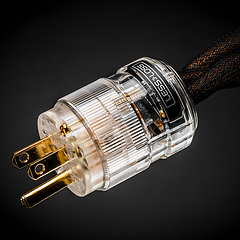 C-MARC™ Prime
The must have foundation for any sound system today.
From
$
486
C-MARC™ Prime
The must have foundation for any sound system today.
From
$
486
-
 C-MARC™ Classic
The unique super-cable power cord everyone's talking about.
From
$
1148
C-MARC™ Classic
The unique super-cable power cord everyone's talking about.
From
$
1148
-
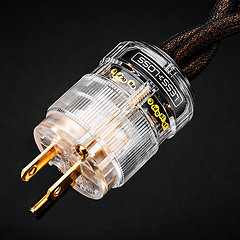 C-MARC™ Classic Entropic Process
The peerless, advanced Classic masterpiece.
From
$
1934
C-MARC™ Classic Entropic Process
The peerless, advanced Classic masterpiece.
From
$
1934
-
 C-MARC™ Stellar Entropic Process
The crown jewel for highest performance power connection.
From
$
2450
C-MARC™ Stellar Entropic Process
The crown jewel for highest performance power connection.
From
$
2450
-
- Loudspeaker Cables
- Interconnect Cables
-
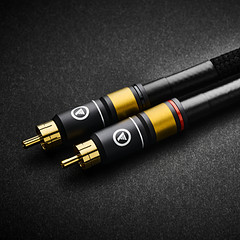 RCA C-MARC™
Cotton-clad true Litz • Whopping 2.3mm2 polarities
From
$
850
RCA C-MARC™
Cotton-clad true Litz • Whopping 2.3mm2 polarities
From
$
850
-
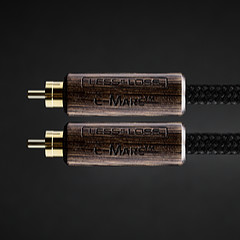 RCA C-MARC™ Entropic Process
Our finest RCA cable • Polished Wenge barrels
From
$
1428
RCA C-MARC™ Entropic Process
Our finest RCA cable • Polished Wenge barrels
From
$
1428
-
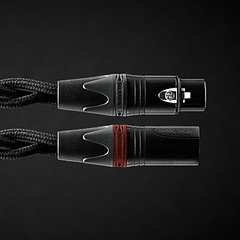 XLR C-MARC™
A hand-braided cotton-clad unique Litz construction
From
$
950
XLR C-MARC™
A hand-braided cotton-clad unique Litz construction
From
$
950
-
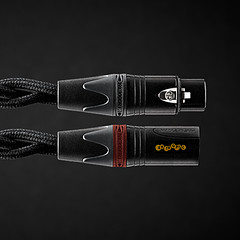 XLR C-MARC™ Entropic Process
Stratospheric performance for the audio connoisseur
From
$
1615
XLR C-MARC™ Entropic Process
Stratospheric performance for the audio connoisseur
From
$
1615
-
- Digital Cables
-
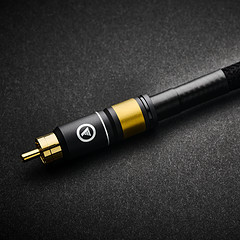 RCA Digital C-MARC™
Cotton-clad unique Litz design • Made only by LessLoss
From
$
510
RCA Digital C-MARC™
Cotton-clad unique Litz design • Made only by LessLoss
From
$
510
-
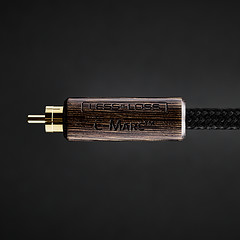 RCA Digital C-MARC™ Entropic Process
Possibly the most subtle digital cable on the planet
From
$
858
RCA Digital C-MARC™ Entropic Process
Possibly the most subtle digital cable on the planet
From
$
858
-
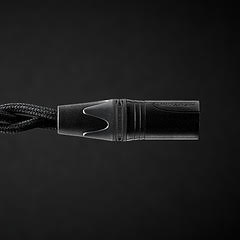 XLR Digital C-MARC™
Featuring a whopping 3 x 2.3mm2 Litz construction
From
$
570
XLR Digital C-MARC™
Featuring a whopping 3 x 2.3mm2 Litz construction
From
$
570
-
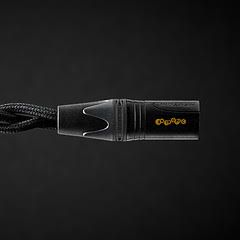 XLR Digital C-MARC™ Entropic Process
Stratospheric performance for the audio connoisseur
From
$
969
XLR Digital C-MARC™ Entropic Process
Stratospheric performance for the audio connoisseur
From
$
969
-
- Grounding Cables
- Bulk Wire and Cable
- Signal Conditioners
-
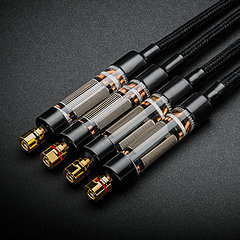 Firewall for Loudspeakers
Firewall for Loudspeakers
C-MARC™ Plug-and-Play Speaker signal conditioning like you've never imagined From $ 1656 -
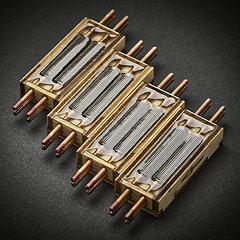 Firewall for Loudspeakers
Firewall for Loudspeakers
DIY version for Self-Installation For the Do-It-Yourself project enthusiast • Solder yourself From $ 800 -
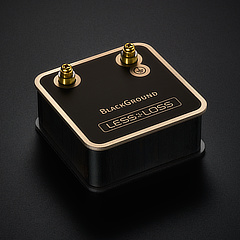 BlackGround DIY
Voltage-ground interface for a variety of applications
From
$
446
BlackGround DIY
Voltage-ground interface for a variety of applications
From
$
446
-
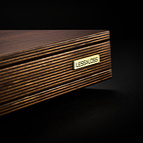 BlackGround 8x/10x Speaker Base
Plug-and-play loudspeaker signal conditioner
From
$
3096
BlackGround 8x/10x Speaker Base
Plug-and-play loudspeaker signal conditioner
From
$
3096
-
- Power Conditioners
-
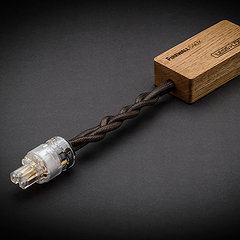 Firewall 640x
Plug-and-play solution for any powered gear
Firewall 640x
Plug-and-play solution for any powered gear
C-MARC™ Entropic Process and standard lead versions From $ 654 -
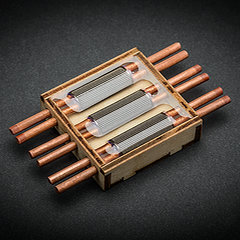 Firewall 640x DIY for Self-Installation
Self-solder and save!
From
$
320
Firewall 640x DIY for Self-Installation
Self-solder and save!
From
$
320
-
 BlackGround DIY
Voltage-ground interface for a variety of applications
From
$
446
BlackGround DIY
Voltage-ground interface for a variety of applications
From
$
446
-
 BlackGround 6x/10x Power Base
Plug-and-play power conditioner
From
$
2350
BlackGround 6x/10x Power Base
Plug-and-play power conditioner
From
$
2350
-
- Power Distributors
- Equipment Feet
- Field Conditioner
- DACs
- Power Cables
- Reviews
- This is definitely the cable to go for. It will almost literally blow your mind. – March 2012, Puresound Magazine
-
I was intrigued by the unanimously positive reviews garnered by these products ...
– by user Raymond Eye
Leaves you speechless
Sensational cables
BEST purchase I've made
Top notch performance
It's a steal
Musical... liquid... 3D
It's not subtle
More than an upgrade
Best I've heard so far
Stellar service
Sounds like a new system
Much more lifelike
Emotional flow
Overwhelming results
More dimensional
Sound is transformative
We were all astounded
Transformed my listening
Sounds so cohesive
Emotionally engaging
- Where to Start
- Free Newsletter
- Newsletter Archive
- B-Stock Alerts
- Shopping Tools
-
Shipping
- Free Shipping Learn about our international shipping policy
-
Return Options
Our satisfaction guarantee
and return policy -
Customs
UPS expedites local
customs clearance
-
Transaction
- Conditions of Sale Agreement for a smooth business transaction
- Privacy Policy We pledge to keep your information private
-
Terms of Use
Business policies
and agreements
-
Account
-
- Contact Us
-
Meet the Designers
-
- Care to share of your personal experience with our products? We'd be happy to post it!
- Want to learn more about our activities? Our Newsletter is both free and spam-free.
hi-res photos, brochures
logos, press releases, and
print-friendly PDF downloads. -
Contact Us
Connect with Us
-
